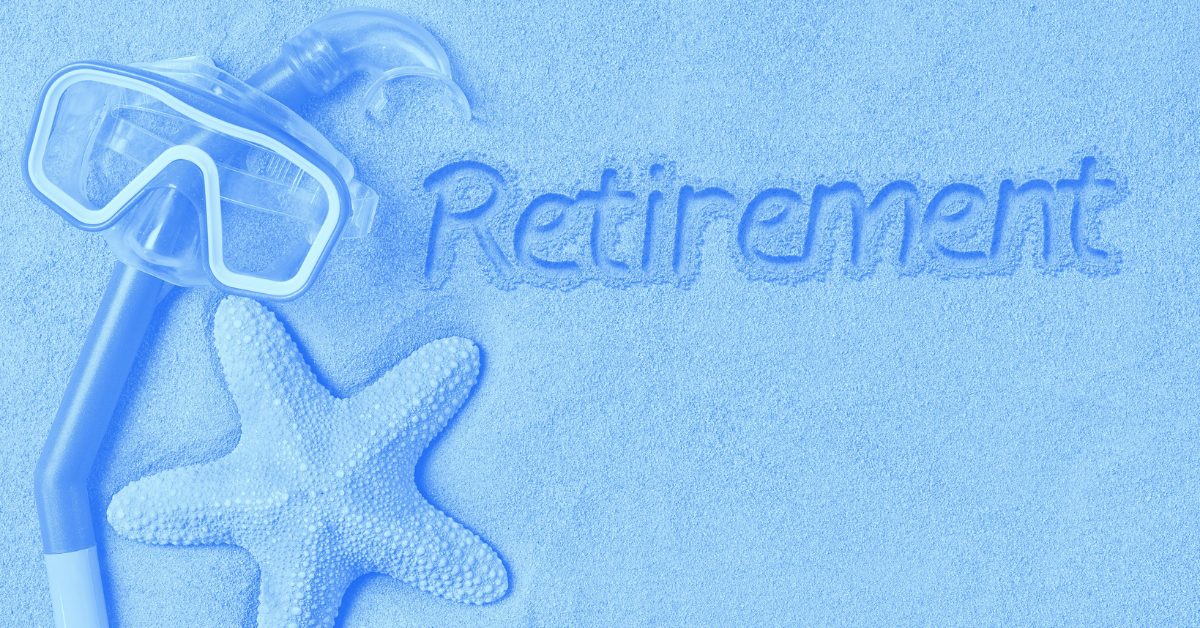Saving for Retirement as a Financial Advisor – A Tax Expert's Take
Share this
Believe it or not, there was a time when employees didn’t have to plan for their retirement (gasp!). Prior to the 1980s, many companies offered their employees a Defined Benefit Plan, in which the employees were guaranteed a specific benefit or payout once they reached retirement age. This benefit—or pension liability from the company’s perspective—was calculated by a formula that factored in the length of employment and salary history of the employee (among many other factors).
This placed a huge burden on the company. The pension liability sat on the company’s books and ate at their earnings, and ultimately impacted their profitability and ability to compete. Because of this, many companies began offering Defined Contribution Plans instead, forcing employees to take on the responsibility of saving for retirement.
This brings us to what we commonly see today. Many people don’t realize the importance of saving for retirement when they first start their career. A lot of the time it is an afterthought, an issue for later on down the road. In reality, it should be at the forefront of your thoughts when starting your career. The amount of money you put away now determines how you can live during retirement. You cannot solely rely on Social Security to live a comfortable life in retirement.
I realize I'm preaching to the choir here. But I also realize that while financial advisors are hyper-aware of and tuned into their clients' retirement plans, goals, and options, often, their own retirement gets pushed to the back burner. So I'll continue.
A high earner who enrolls in Social Security, at age 70, could get a maximum benefit of $3,790 each month, totaling $45,480 a year. To put this in perspective, the average expenses incurred during retirement is about $49,000 a year. Let’s assume you retire at 65 years old, and you live to be 80 years old—that's $735,000 of expenses throughout your 15 years of retirement. That’s a lot of money! Relying solely on Social Security, you would receive $682,200. That is a $52,800 difference. I'll say it louder for the people in the back: THAT’S A LOT OF MONEY! This just proves that Social Security will not be a reliable, standalone source of income during retirement.
Now that we have those intimidating figures out of the way, let’s talk about the options you have when it comes to saving for retirement. Whether you are starting a new firm or you already have an established firm, there are plenty of retirement plans that can work for you. Below I'll break down the most popular retirement options and their respective contribution limits, income limits, and tax implications. To wrap it up, I'll explore with which plan/option would be the most beneficial for each stage of your business.
Types of Retirement Accounts
IRAs
An IRA in the simplest terms is a “savings account” with tax benefits. You are allowed to fund these accounts as long as you, or your spouse, have taxable compensation. The ability to fund different kinds of IRA’s depends on your income, tax filing status, and eligibility to participate in an employer-sponsored-retirement plan, such as a 401(k). If you or your spouse do not have any employer plan, then there are no restrictions on funding a deductible IRA. However, if that is not the case, and one of you are eligible to participate in an employer-sponsored plan, there are strict limitations on which type of plan and how much contributions can be deductible. The eligibility generally relies on your modified adjusted gross income (MAGI).
Additionally, IRAs are generally easy and inexpensive to establish. These types of accounts can be established after year end and you are able to make contributions up until April 15. For example, you will be able to make a 2020 IRA contribution until April 15, 2021. Below we will go through the most common types of IRAs, a Traditional IRA, Roth IRA, SEP IRA, and a Simple IRA.
Traditional IRA
Income Taxes: Traditional IRAs come in two varieties: deductible and nondeductible. Generally, a deductible IRA is better, because it can lower your tax bill by allowing you to deduct your contributions on your tax return, but in order to qualify for this type of account you must meet some specific criteria, like stated above.
A Traditional IRA is known as a tax deferred retirement account, which means there will not be any tax until you withdraw the money in retirement.
Contribution Limits: $6,000 in 2020, $7,000 if age 50 or older.
Income Limits: In order to contribute to an IRA, you, or you spouse, must have “earned income.” Depending on the type of account you have, deductible or nondeductible, and whether or not you, or your spouse, are covered by a retirement plan at work will determine the deductibility of your contributions. A chart for these limitations can be found below.
(The table for eligibility and limitations for a Traditional IRA can be found here.)
Roth IRA
Income Taxes: In a Roth IRA, the contributions are made “after-tax,” this means that there is not an income tax deduction for contributions, because the money contributed to the account has already been taxed. The balance will then grow tax-free and upon retirement there will not be any additional taxes when a withdrawal is made.
Contribution Limits: $6,000 in 2020, $7,000 if taxpayer is age 50 or older.
Income Limits: In order to contribute to a Roth IRA, the taxpayer must have earned income. Much like a Traditional IRA, a Roth account has limitations on how much can be contributed. A chart for these limitations can be found below.
(The table for contribution limits for a Roth IRA can be found here.)
SEP IRA (Simplified Employee Pension plan)
A SEP IRA is a retirement plan in which only the employer can contribute to the fund. This type of plan is easy to set up and operate and it is cost effective with low administrative costs.
Income Taxes: Contributions to this account will reduce the taxpayer’s taxable income. Additionally, the money contributed will grow tax-deferred until a withdrawal is made upon retirement.
Contribution Limits: Lesser of $57,000 or 25% of compensation per employee.
SIMPLE IRA
Much like a SEP IRA, a SIMLE IRA is easy to set up and operate and has low administrative costs as well. A key difference between these two plans is that employees are allowed to contribute, while the employer is required to.
Income Taxes: Contributions to this account will reduce the taxpayer’s taxable income. Additionally, the money contributed will grow tax-deferred until a withdrawal is made upon retirement.
Contribution Limits: $13,500 in 2020, $16,500 for employees age 50 or older.
401(k)
A 401(k) is an employer-sponsored retirement plan in which the employee can contribute a portion of their salary into this long-term investment account. As an employer this type of plan is a more difficult to establish and has higher administrative costs. This type of plan needs to be established by year end and employee contributions must be made by year end as well. Employer contributions have a bit more leeway when it comes to matching, the company matching payments are not due until the due date of the returns, including extensions. These are a few of the reasons 401(k) plans are more complicated than IRAs.
Income Taxes: Pre-tax contributions will reduce your taxable income, and the money will grow tax deferred. Upon withdrawal the money taken out will be subject to taxes.
Contribution Limits: $19,500 in 2020 for the employee, if you are over the age of 50 you can contribute an additional $6,500.
Matching Contributions: Many employers offer to make matching contributions to these plans, up to 25% of salary, when elected as an S corporation, or, if you are a sole proprietor, 25% of the compensation from your Schedule C income. A common method companies use to match the employee’s contribution is 100% of the first 3% of the employee salary, then an additional 50% of the employee’s contribution percentage up to a specified limit. For example, if an employee contributes 3% of his/her salary, the company will also contribute that same 3%. If an employee decided to contribute 5% of his/her salary the company will contribute 4% (100% of the first 3%=3%, then 50% of the additional 2%=1%).
Maximum Total Contribution: $57,000 for 2020, or 63,500 for aged 50 and older.
A common misconception is to either not pay yourself or not pay yourself enough when you are the business owner. Not only does this limit your personal income, but it can also limit your retirement contribution as well. If you were to pay yourself a higher annual salary, the company will be able to match up to 25% of that salary, which can allow you to truly maximize the yearly retirement contribution, up to $57,000 or $63,500.
Solo 401(k)
This is the same as a traditional 401(k) plan but covers a business owner with no employees, or the owner and his or her spouse. This type of plan has the same rules and requirements as a regular 401(k), but the business owner plays both roles: the employee and the employer.
Retirement Plans for the Different Phases of Your Business
Start-up
The first few years after starting your own RIA, there is no guarantee you will be profitable. Profitability does not have to affect the choice of saving for retirement. As you are in the works of establishing your firm, IRA’s are an easy way for you to put away some money for retirement. One way to determine whether you want a Roth IRA, or a Traditional IRA is to look at your current tax bracket and compare it the tax bracket you expect to be in when you retire. If you are expecting to be in a higher tax backet during retirement, a Roth account will be more beneficial since you will be contributing after-tax dollars at a lower rate, while withdrawing them tax free where it could be taxed at a higher rate during retirement. During this stage of business, these are the main two accounts you should be focusing on.
Growth
When you have established a name and a brand for your RIA, it is probably that you will consistently bring in new clients and make a profit. This growth stage can impact your decisions about retirement, especially if you are in need of additional help and hire employees. The IRA’s that you established in the startup phase will still be a viable option for you, but if you are considering hiring additional employees you may need to seek a plan for them as well. This is where the employer-sponsored plans will come into play. SEP IRAs and SIMPLE IRAs will be a great option for this stage of business, because they are simple and cheap to implement.
Maturity
This stage of business is when the company is comfortable. Its rapid growth has slowed, you have your customer base, and you are making a steady and consistent profit. This is a great time for a business. Depending on the size of your firm will determine what type of plans will be most beneficial. As stated above, the IRAs established during the startup phase will still work for you, individually, as well as the SEP and SIMPLE IRAs for your employees. If you became a larger firm with many employees, you may want to move away from the employer-sponsored IRA plans and move into a 401(k).
Decline or Revamp
If you've made it this far in your business, you have built a successful firm. Continue doing what you've been doing—clearly it's working.
If there's only one thing you take away from this blog post, I hope it's that planning for retirement is incredibly important and should not be overlooked. Sure, you have it dialed in for your clients; the real question is, how much thought have you given your own retirement plan?
Retirement options during each phase of a business can and will depend on the personal situations of each firm. When deciding on a retirement plan, you should consider how much money you are willing to contribute to the fund. If you plan on only saving around $6,000 a year, there is no point of spending the money to establish a 401(k) where the maximum contributions can be more than $50,000 per year. The key takeaway is whether you are making a steady profit, or not making a profit at all, it's still possible to save for retirement.

About the Author
XYTS Tax Specialist Blake Mattfeldt is a recent graduate of the Master of Professional Accountancy program at Montana State University. He has a bachelor’s degree in business with a concentration in finance and accounting. In addition to his experience with the Volunteer Income Tax Assistance program while at Montana State, he worked as a tax intern for Rudd and Company.
Share this
- Road to Launch with XYPN Member Alan Skillern, CFP®, MBA
- Coaching for Better Time Management: Prioritizing Organic Growth in Your Daily Routine
- Boost Your Financial Advisory Practice: SEO Strategies and CRM Optimization for Sales Success
- Navigating the AI Revolution: What Financial Advisors Need to Know
- Advisor Blog (692)
- Financial Advisors (221)
- Growing an RIA (99)
- Digital Marketing (87)
- Marketing (84)
- Community (81)
- Start an RIA (76)
- Coaching (72)
- Business Development (71)
- Running an RIA (70)
- Compliance (69)
- Client Acquisition (65)
- Technology (64)
- XYPN LIVE (59)
- Entrepreneurship (56)
- Sales (49)
- Practice Management (44)
- Client Engagement (41)
- XYPN Books (38)
- Bookkeeping (37)
- Investment Management (37)
- Fee-only advisor (36)
- Lifestyle, Family, & Personal Finance (31)
- Employee Engagement (30)
- Client Services (25)
- Financial Education & Resources (24)
- Journey Makers (21)
- Market Trends (21)
- Process (14)
- Niche (11)
- SEO (9)
- Scaling an RIA (9)
- Career Change (8)
- Transitioning Your Business (7)
- Partnership (6)
- Transitioning To Fee-Only (4)
- Social Media (3)
- Transitioning Clients (3)
- Emerald (2)
- Persona (2)
- RIA (2)
- Onboarding (1)
- Sapphire (1)
Subscribe by email
You May Also Like
These Related Stories

What Self-Employed Financial Advisors Should Know About Retirement
Jun 22, 2020
8 min read

Choosing a Small Business Retirement Plan from a Tax Perspective
Sep 27, 2021
7 min read



